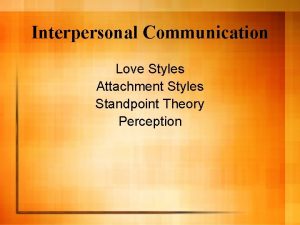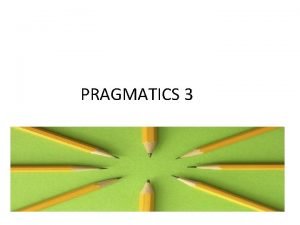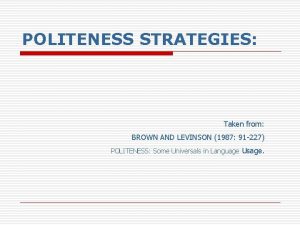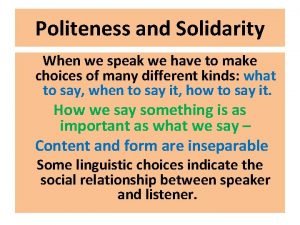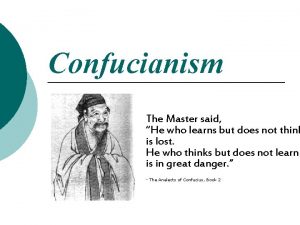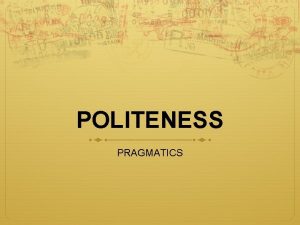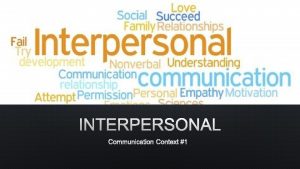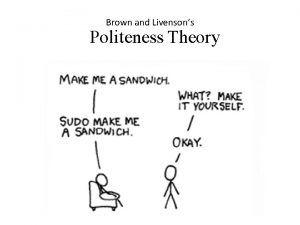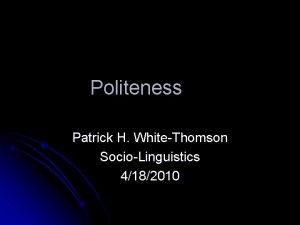Interpersonal Communication Politeness Theory Chris Lewis Key Theorists










- Slides: 10

Interpersonal Communication Politeness Theory Chris Lewis

Key Theorists Brown and Levinson (1978, 1987).

Definitions Face: the desired self-image you wish to present to others. Positive Face: a person’s needs to be liked, appreciated, and admired. Negative Face: a person’s desire to act freely, without constraints or imposition from others. Face-Threatening Acts: common behaviors such as apologies, compliments, requests, and criticism.

Key Components of Politeness Theory A. Assumptions B. Preserving Face C. Factors that Influence Politeness

Assumptions 1. All individuals are concerned with maintaining face. 2. Human beings are rational and goal oriented. 3. Some behaviors are fundamentally face threatening.

Preserving Facework: specific messages that deter or minimize face-threatening acts. Preventative Facework: strategies that a person can use to help themselves or another avoid facethreatening acts. Corrective Facework: messages an individual can use to restore their own face or the face of another once a face threatening act has occurred.

Suprastrategies used when Communication Threatens Face Avoidance: when a speaker chooses not to communicate in a way that would create embarrassment or loss of face for another. Going off Record: when a speaker subtly hints the facethreatening topic. Negative Politeness: when the speaker makes an effort to recognize the other’s negative face needs.

Suprastrategies Continued… Positive Politeness: when the speaker emphasizes the receiver’s need for positive face. Bald on Record: when the communicator makes no effort to protect the other’s face and simply commits the facethreatening act.

Factors that Influence Politeness Prestige: taking into consideration whether the status of the other person is higher or lower than their own status. Power: taking into consideration whether the other person has more power over them at the time. Risk: taking into consideration whether or not the other person’s feelings will be hurt.

What I Learned about Politeness Theory We learned that politeness theory is how we manage our own and others identities through interaction. We learned there are 3 primary assumptions of politeness theory: maintaining face, humans are rational when achieving face needs, some behaviors are face threatening. Facework is vital to create and maintain a desired self image. There are other key behaviors that can contribute to face: preventive facework, corrective facework, avoidance, going off the record, negative and positive politeness.


